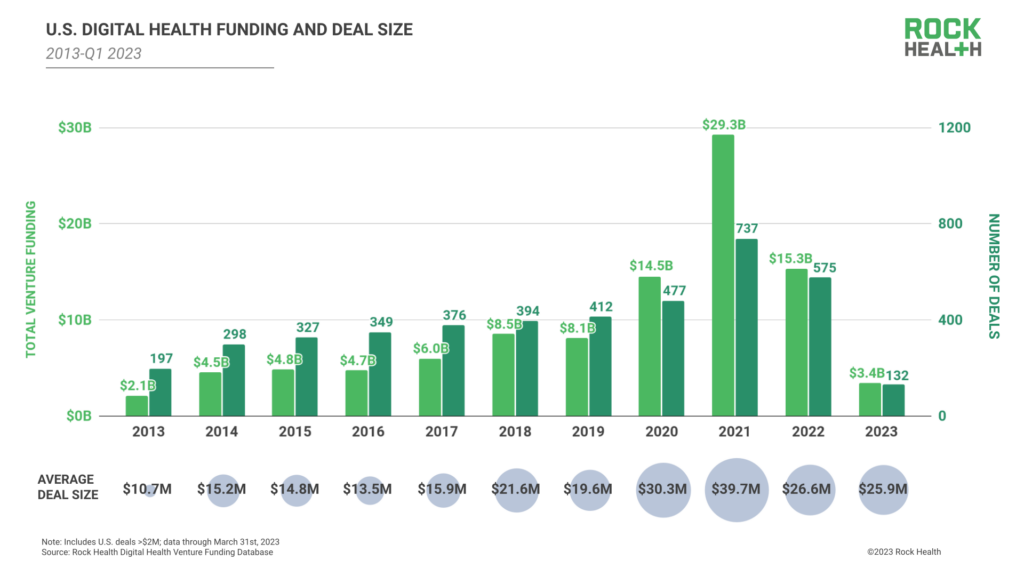With the growing concern around the current climate crisis, industry leaders everywhere seek new ways to reduce their carbon footprint. The healthcare industry alone accounts for 8.5% of emissions in the United States, with medical devices and products contributing to a significant portion of the 5.9 million tons of healthcare waste each year. However, healthcare leaders are ready to make a change. In 2022, 61 of the largest U.S. hospital and health sector companies joined the Health Sector
Read More
Public Health
CDC Launches Fentanyl Dashboard to Monitor Nonfatal Overdose Trends
What You Should Know:
The Centers for Disease Control and Prevention (CDC) has recently released its Fentanyl Study Dashboard, an innovative tool that utilizes data from the Toxicology Investigators Consortium (ToxIC), to track and monitor nonfatal overdose trends associated with fentanyl. The dashboard, “Fentalog Study: A Subset of Nonfatal Suspected Opioid-Involved Overdoses with Toxicology Testing” went live in May of 2023 aims to provide vital insights to healthcare
Read More
The End of One Health Crisis Must Not Lead to a New One
Three years after the World Health Organization declared COVID-19 a pandemic, the Public Health Emergency (PHE) enacted in the United States came to an end this May. As much as we would like to go back to normal, it seems that simply turning the page on the PHE without carrying forward what we learned during COVID-19 will leave millions of Americans scrambling for healthcare and disengaging from essential preventive health services. The result will have a devastating impact on those with chronic
Read More
FWA Is Increasing. Healthcare Costs Are Spiraling. Now There’s A New Generation Of AI Technology To Take Back Control
In 2020, the Department of Justice estimated that fraudulent, wasteful, and abusive (FWA) billing practices account for more than $100 billion of the nation’s healthcare expenditures.1 Today, the National Healthcare Anti-Fraud Association (NHCAA) conservatively estimates that healthcare FWA costs the nation about $68 billion annually, representing 3% of the nation's $2.26 trillion in healthcare spending.2 FWA estimates from commercial health plans range as high as $230 billion annually, or
Read More
DEA Extends COVID-19 Telemedicine Flexibilities for Prescribing Controlled Medications for 6 Months
What You Should Know:
Today, the Drug Enforcement Administration (DEA) and the Substance Abuse and Mental Health Services Administration (SAMHSA) issued the “Temporary Extension of COVID-19 Telemedicine Flexibilities for Prescription of Controlled Medications” – a temporary rule that extends telemedicine flexibilities adopted during the COVID-19 public health emergency (PHE).· The temporary rule will take effect on May 11, 2023, and extends the full set of telemedicine flexibilities
Read More
4 Keys to Modernizing Public Health Data Collection and Analysis
The COVID-19 pandemic shined a spotlight on the urgent need to modernize the nation’s public health system. Despite success in rapidly developing vaccines, the unprecedented public health emergency also exposed significant gaps in U.S. public health infectious disease data collection and analysis methods which are critical for identifying behavioral risk factors and preventive actions.
The Problem
Unfortunately, inefficiency remains a hallmark of the U.S. public health surveillance system
Read More
Report: 20% of Americans Skip Healthcare Due to Transportation Barriers
What You Should Know:
A new analysis shows more than 21% of U.S. adults without access to a vehicle or public transit went without needed medical care last year. These individuals were significantly more likely to skip care than those who reported neighborhood access to public transit services (9%).This analysis examining the association between transportation and access to healthcare was conducted by Urban Institute researchers with support from the Robert Wood Johnson
Read More
Closing Racial Disparities in Patient Portal Usage
Over the last decade, the healthcare industry has experienced an explosion of digital innovation. Simultaneously, shifting consumer preferences around convenience and access to care has accelerated the pace of technology adoption at unprecedented speed, especially in the wake of the pandemic.
The value of these digital tools is manifold: healthcare enterprises report increased operational efficiency, higher quality care delivery, cost savings, and the potential to deliver a more
Read More
Q1 2023 Digital Health Funding Reaches $3.4B Across 132 Deals
What You Should Know:
2023 started off with the hallmarks of a rebound year. While Q4 2022 signaled the tail end of the digital health funding cycle, January and February funding numbers began to suggest that sector investment was slowly but surely inching back upwards. Inflation was easing ever so slightly. Investors were rediscovering their confidence and launching new projects, signaling optimism in the sector, according to a new Rock Health report. However, recent news—the collapse of
Read More
Hybrid Healthcare and The New Normal: Biggest Adjustments for Healthcare Organizations
The adoption of virtual health has increased dramatically since March 2020, with 150 million telehealth claims in less than two years. Like other revolutionary innovations throughout history, healthcare innovation is necessitated by time — and unmet needs. So many struggled to create virtual care solutions during the pandemic, and many technology companies jumped into the telehealth space because of the unmet needs of patients. But the pandemic era is soon coming to an end, leaving telehealth to
Read More










